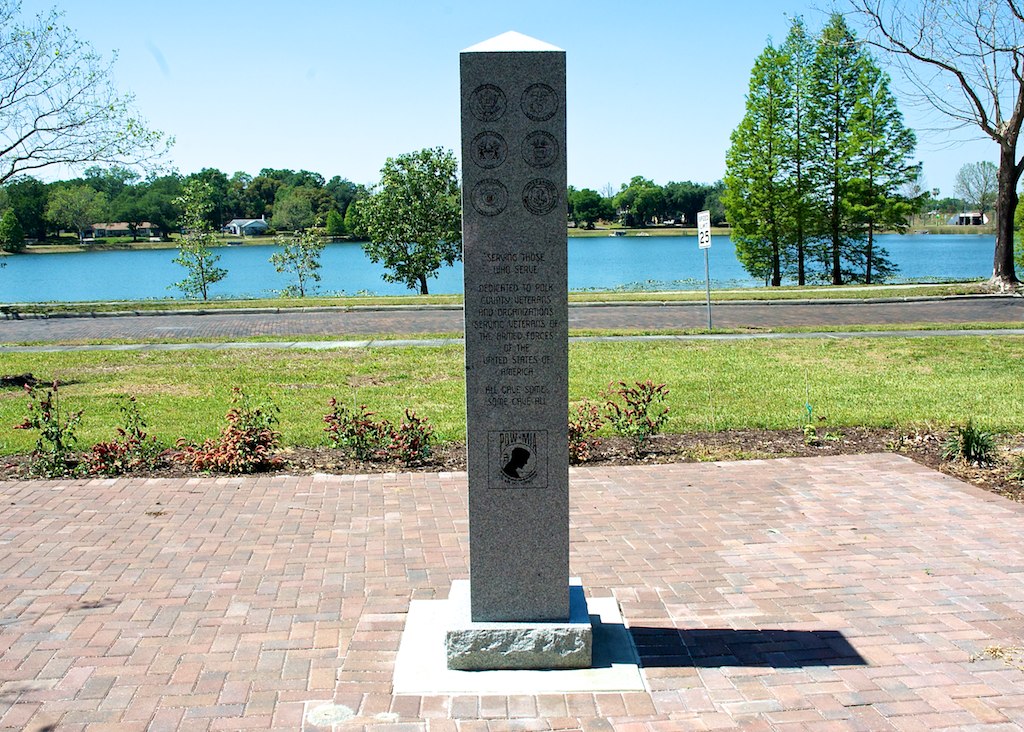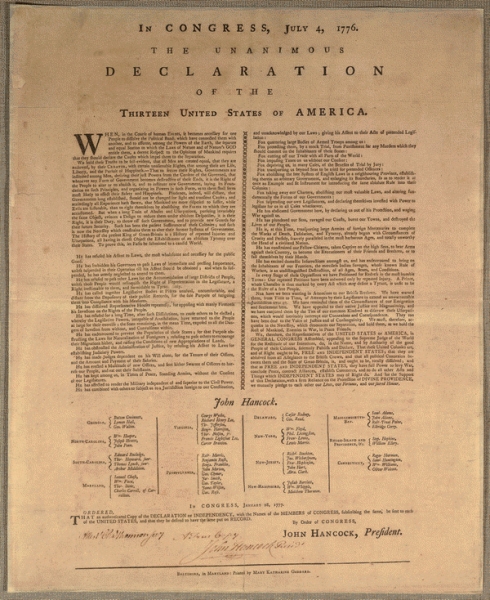I have lived in Lakeland, Florida, for more than sixteen years now, yet was unaware of the existence of Veterans Memorial Park. My connection with it is going to be more direct in the next few years, but more of that in a moment.
I now know there has been an ongoing project to erect memorials in the park for veterans of America’s wars. A memorial titled “The Greatest Generation” serves as a fitting remembrance of those who fought in WWII.
Linked to that is one that specifically recalls the attack on Pearl Harbor that led our nation into that war. I was recently in Hawaii and visited the Arizona Memorial, so it was a bit of a surprise to me that Lakeland would have its own monument to honor those who died there.
Another particularly poignant monument calls to remembrance those who suffered as POWs and who were listed as MIA.
In addition to tributes to Veterans, the park is the site of the 1976 bicentennial rose garden and memorials to First Responders – Law Enforcement and Fire Fighters/Fire Rescue.
Now a new monument is being planned, one to commemorate the Declaration of Independence. I have been asked to serve on the steering committee for the planning of this monument; my task is to ensure the historical accuracy of the monument and the layout of the key moments leading up to the signing of the Declaration. The tentative plan is for more than a simple obelisk or plaque. The hope is to create a memorial that will aid in the knowledge of why the Declaration was considered essential to the Founders of the country.
One very interesting design is being proposed, and I have to admit I learned a bit of American history I didn’t know when I heard of the possible design. It is intended to focus on the Declaration, to be sure, but also on the woman who was commissioned by the Continental Congress to print the first copies that included all the names of the signers.
In July of 1775, Mary Katharine Goddard was named postmaster of Baltimore. This made her the first female postmaster in the colonies, and when independence was declared, she became the first postmaster for the new United States. According to Harvard’s Declaration Resources Project,
In mid-December, with British troops closing in on the city of Philadelphia, the Continental Congress evacuated to Baltimore. Mary Katherine Goddard was suddenly responsible for all incoming and outgoing mail for the delegates to the Congress, for printing one of only two newspapers in the city, and for printing other miscellaneous documents, including Congressional broadsides.
Goddard printed several resolutions and notices by order of Congress in December 1776 and January 1777 before being tasked with printing a particularly special document. On January 18th, 1777, the Journals of the Continental Congress record the following order: “That an authenticated copy of the Declaration of Independency, with the names of the members of Congress subscribing the same, be sent to each of the United States, and that they be desired to have the same put upon record.”
Here was the result:
Harvard’s site further explains,
The Goddard Broadside was the first printed version of the Declaration of Independence specifically intended for preservation. It was the first printed broadside to use the title “The Unanimous Declaration of the Thirteen United States of America”. It was the first version of the Declaration to list the names of (most of) the signers. And, it is the only “official” version of the Declaration of Independence to be printed by a woman. Mary Katherine Goddard’s imprint at the bottom of her broadside proudly presents not only her full name, but also the city where Congress met for two crucial months, and where she lived and worked for over forty years.
Let’s get a closer look at the bottom of this printed page.

As I said, this proposed monument is in the early planning stages. Changes may, and probably will, be made to the final product. But it is a noteworthy project, in my opinion, especially as we look toward the 250th anniversary of the Declaration of Independence, which is the impetus behind this endeavor.
As a historian, I love being part of this attempt to help educate the public about all the events that led up to the need for this Declaration: the Stamp Act; the Townshend Acts; the Tea Act; the Coercive Acts; the outbreak of battle at Lexington and Concord and at Bunker/Breeds Hills.
There were many whom we deem patriots now who were reluctant to throw off their British heritage. They did their best to appeal to the Mother Country to hear their concerns. Only when those concerns were dismissed and the threat of violence turned into the real thing did they ultimately choose to embark on the road to nationhood. It is a story worth telling, and I hope to help tell it well through this monument that highlights the Declaration of Independence.





